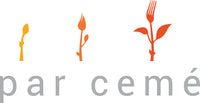
La moussaka est-elle grecque, turque, bulgare, iranienne, etc. ? Toutes ces réponses sont bonnes ? Que retrouve-t-on dans la moussaka ? L’aubergine, qui vient d’Asie, est de l’Inde, Birmanie, Thaïlande et la tomate, qui est américaine. De l’agneau, viande consommée depuis des millénaires un peu partout. En gros comme bien des plats la moussaka est le fruit de métissages successifs. Ce qui nous semble plus intéressant est l’apport de chacune de ces cultures à ce plat. Depuis 100 ans, les Grecs (en 1910, le chef cuisinier Nikolaos Tselementes) y ont rajouté une béchamel. Les Turcs mélangent les morceaux de légumes plutôt que de les étager et y mettent des courgettes. Dans les Balkans, on fait appel à une autre américaine, la pomme de terre. Cette semaine, Par Cemé vous propose une version végétarienne de la moussaka.
Is moussaka Greek, Turkish, Bulgarian, Iranian, etc.? All these answers are correct? What ingredients do we find in moussaka? Eggplant, which comes from Asia, eastern India, Burma, Thailand, the tomato, which is American and of course, Lamb, a meat consumed for thousands of years all over the globe. As with many dishes, moussaka is the fruit of much across border influences. What seems to us more interesting, is the contribution of each of these cultures to this dish. Over a 100 years ago the Greeks (in 1910, the chef Nikolaos Tselementes) added a béchamel. The Turks mix the vegetable pieces rather than layering as well as adding zucchini. In The Balkans included another American: The potato! This week By CEME offers a vegetarian version of moussaka.

